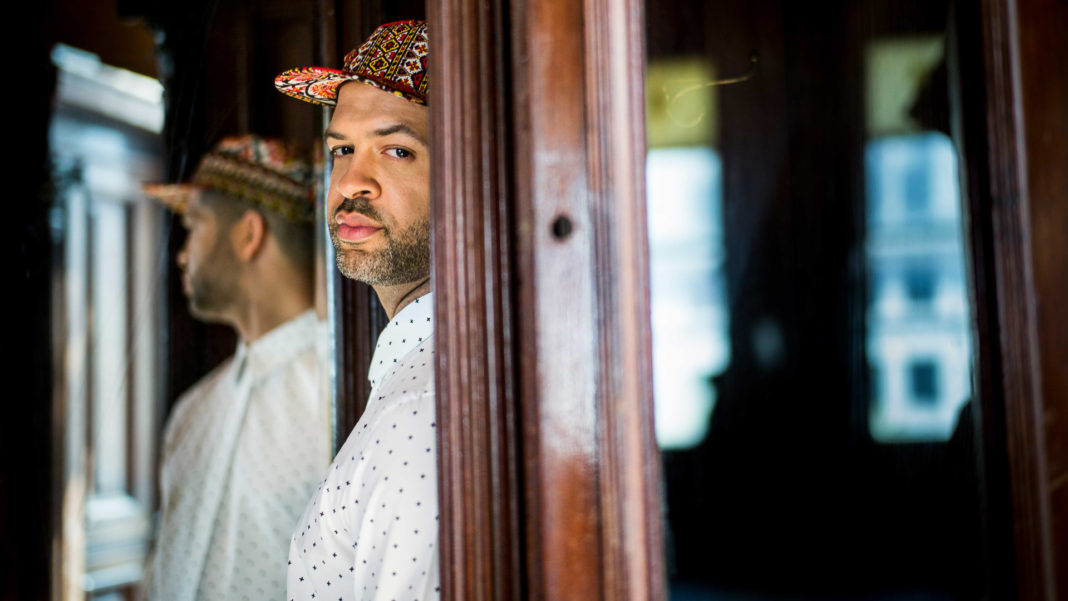When live score to film concerts take place they are usually blockbuster films that rely on a big orchestra with soaring themes that are instantly recognizable. On Saturday, The Soraya in Northridge is doing things differently. They will be showing Ava DuVernay’s Selma with the score by jazz musician, composer and artist Jason Moran performed live with Moran playing as well.
This isn’t the first time Moran has performed the score live with an orchestra. But each time he does, it excites him.
“I rarely get to perform with an orchestra,” he said by phone a couple weeks ago. “It always feel brand new to me. No matter how long we worked on the score in our little pods and then making the recordings, every time I get to feel the sound of the basses moving around or the sound of the timpani or the sound of just a few of those themes, I realize it is important to listen to a film with as much depth as you view it.”
Moran has traditionally recorded with smaller ensembles (including The Bandwagon, his trio of choice), for such albums as Ten and Same Mother. His largest ensemble was for 2014’s All Rise, a tribute to Fats Waller. Having this experience with Selma has opened his mind to recording with a larger group. But there are challenges.
“Costs are prohibitive,” he says with a laugh. “[Composer/musician] Roscoe Mitchell just told me two weeks ago when I was talking about the cost of finding an orchestra to play with, he said, ‘you have to make your own orchestra.’ I shuddered in disbelief because it was so true. At some point there will be an orchestra of my own and it will have a different set of rules to play. Watching how Wayne Shorter or Terence Blanchard manage it, these are musicians who branch out into this territory and make strides into how it can work.”
In addition to his work as a composer, Moran was lauded in the New York Times for two projects he did, Two Wings: The Music of Black America in Migration (a concert he produced and performed with his wife, Alicia Hall Moran) and his art installation at the Whitney Museum of Art in New York. This was no small accolade. They listed these two 2019 accomplishments on their list of 10 Definitive Moments in Jazz for the decade.
With that kind of praise, does he agree with his fellow musician and collaborator Charles Lloyd, who told me, “I thought I could change the world with my creativity. I’m naive enough to think that.”
“A lot of us do. I was brought plummeting back to earth some years ago. I believe in changing the locals around me,” he says with a big laugh, “from the few students I have. That’s enough. Before I used to think the music should be able to go everywhere. There’s a lot of work to be done in my neighborhood, in my building, on my corner, the amount of people who still sell drugs and the people who still buy them in a steadily gentrifying neighborhood. I love making music, but I really know that my one-on-one is where I really thrive. I won’t change the world, but I can make a few people change their decisions.”
Part of his one-on-one is with the twin boys he and his wife are raising. No matter how crazy the world becomes, he still has faith in raising children.
“Alicia and I have a lot of fun raising our kids because they bounce back and perforate even our flawed visions. That’s part of evolution. My hope is that in raising my kids that their relationship, in watching two creative parents deal with sensitive subjects where everything we touch is about real life and not abstract, that they understand there is a way to move through art. Maybe in our family that is our birthright – something that has been passed down in the gene pool. This is our role in society. Through that they will know that there are other people addressing another facet of that same issue, perhaps with another technique.”
Moran also collaborated with Ta-Nehisi Coates on a staged presentation of Between the World and Me, which he indicates may be headed to the West Coast in the fall or spring of next year. When he spoke to Billboard Magazine about the project he told them “the country hasn’t found a way to resolve centuries of terror.” Does he think this country ever will?
“I haven’t seen the example that tells me there’s a way for America to figure it out. When America says you don’t need a book or a violin, I’m not sure how that can solve itself. The one thing I’ve seen from artists who get support from their government is having education be kind of more widely available to people rather than be off-limits. That is a big key for us. The artist will always find the need for self-improvement which is a reflection of the world around them. That’s where our work stems from. I can’t imagine any other work than the way I work right now. With all the stigma, oppression, rigor, technique, joy and all of the humility it takes to make the music I make. It feels very much a practice and maybe that is a holdover of other generations.
“There is still something that has to be expressed that we haven’t quite heard or experienced yet. That takes a community that says it is okay to share it. It’s okay for you to write about it. The heart is part of the curing of the other force that is happening. We have to keep putting it out there. The other side wants to beat you down and make you give up. No history says that’s worth doing.”
Photo of Jason Moran courtesy of the artist













